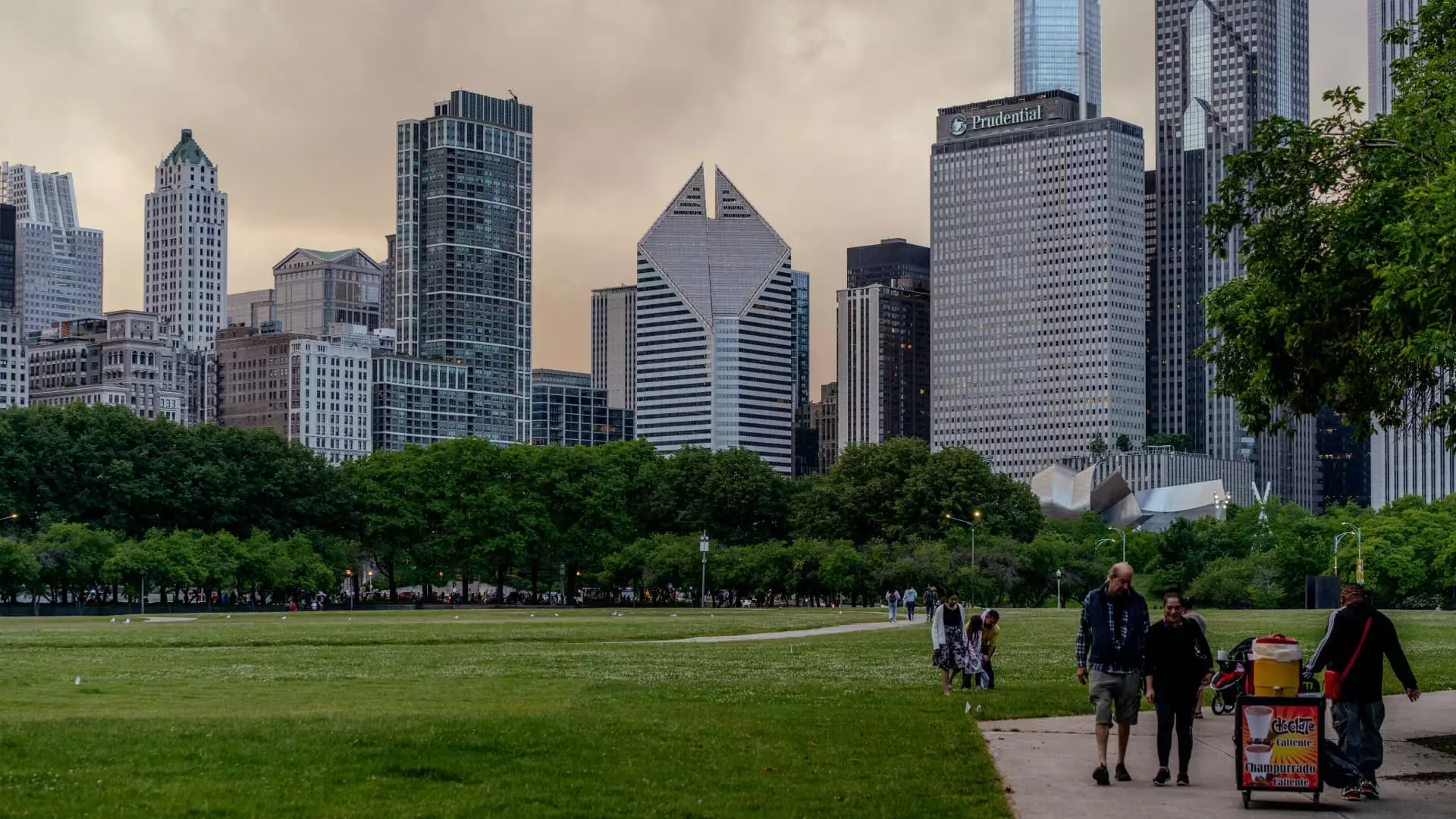Residential rental markets across the United States are experiencing significant fluctuations, shaped heavily by post-pandemic recovery. While some cities see soaring apartment prices, others are providing much-needed relief to renters. This article delves into the latest trends in rental prices across various U.S. metropolitan areas, examining the underlying forces that influence these shifts and the implications for renters.
Recent data from Zumper’s National Rent Report reveals a stark contrast in rental growth among major U.S. cities. Syracuse, New York, stands out with staggering increases in rental prices—one-bedroom apartments have surged by 29%, and two-bedroom units rose by 25% since June 2023. This surge positions Syracuse at the forefront of rent inflation, contrasting sharply with the behaviors observed in other locales.
In addition to Syracuse, cities such as Lincoln, Nebraska; Chicago; Buffalo, New York; and Madison, Wisconsin have reported rental increases of at least 10% for one- and two-bedroom apartments. This trend reflects a broader challenge facing renters in these markets, where supply struggles to meet the burgeoning demand.
Contrasting sharply with cities experiencing price hikes, some areas are witnessing a decline in rental prices. Cities like Oakland, California, and various cities in Tennessee and North Carolina have reported drops in one-bedroom asking rents of at least 5%. These declines suggest a more balanced market where inventory is growing, providing tenants with greater choices and more competitive pricing.
Understanding these opposing trends highlights the uneven nature of the rental market across the United States. As some cities struggle with rising rents, others manage to offer affordable options for residents, reflecting the broader dynamics of supply and demand at play.
On a national level, the increase in rental prices has not been as severe as the localized spikes in certain cities. According to Zumper’s findings, one- and two-bedroom apartment rents have seen modest increases of 1.5% and 2.1%, respectively, since mid-2023. However, this figure underscores an ongoing challenge; even a smaller rate of increase can pose challenges to households already strained by high living costs.
Notably, New York City remains the most expensive market for renters, with a staggering average rent of $4,300 per month for a one-bedroom apartment. In contrast, Akron, Ohio, and Wichita, Kansas, showcase a starkly different scenario, with typical rents for similar units hovering around just $730. This enormous disparity highlights the widening affordability gap that many American cities are grappling with.
The complexities of the rental market can largely be attributed to the laws of supply and demand. As pointed out by Crystal Chen, an analyst from Zumper, areas experiencing soaring rents typically see demand vastly surpassing the availability of rental units. For instance, New York City’s vacancy rate recently plummeted to an all-time low of 1.4%, a stark contrast to the 4.5% vacancy rate observed just two years prior.
In discussing the implications of such a low vacancy rate, New York City Mayor Eric Adams remarked on the city’s struggle to match housing supply with overwhelming demand. This imbalance is alarming; not only does it perpetuate high rental costs, but it also leads to increased financial burdens on renters.
As rental prices rise, many households face severe financial challenges. Data from Zillow indicates that a typical renter now allocates nearly 30% of their income to housing costs, a figure still elevated compared to pre-pandemic norms. The impact of this financial strain cannot be overstated, particularly for low-income residents, where about 86% of those earning below $25,000 annually are categorized as severely rent-burdened.
Moreover, the ramifications of inflated rents extend beyond immediate financial stress; they can hinder people from saving for future investments like homeownership. According to Fitch, high rental prices create barriers that keep potential buyers from entering the market, further complicating the broader housing crisis.
The Shifting Rental Market Post-Pandemic
The rental landscape has evolved significantly in the aftermath of the COVID-19 pandemic. Initially, rent inflation plummeted as many people chose to leave urban centers in search of more space and affordability. However, as the world has shifted back towards normalcy, the demand for housing in urban areas has surged once again, resulting in rebounds in rental prices.
During the pre-pandemic years, annual rent inflation hovered between 3% and 4%, peaking at nearly 9% in early 2023. More recently, this rate has moderated to approximately 5%, yet it continues to signal challenges for renters and potential buyers alike.
As rental prices continue to fluctuate across various metropolitan areas, the realities for American renters are increasingly complex. With some cities grappling with skyrocketing rents while others offer relief, it becomes paramount for policymakers and urban planners to address these disparities. Fostering a more sustainable housing market will require concerted efforts to balance supply and demand, while also ensuring that renters are afforded protections against excessive price hikes. Without effective strategies in place, the dream of affordable housing remains daunting for many individuals and families across the nation.

